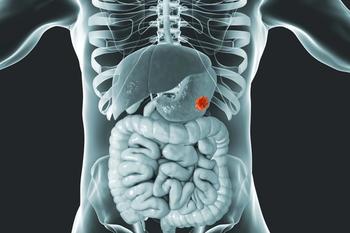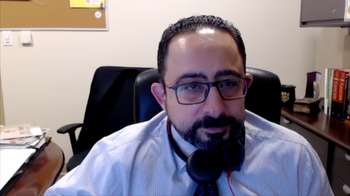
Does Oxaliplatin Improve Survival Over Cisplatin in Advanced Gastric Cancer?
Researchers tested the novel oral fluoropyrimidine derivative S-1 plus oxaliplatin vs S-1 plus cisplatin in patients with diffuse-type or mixed-type advanced gastric adenocarcinoma.
CHICAGO-The novel oral fluoropyrimidine derivative S-1 plus oxaliplatin was more efficacious and less toxic than S-1 plus cisplatin in patients with diffuse-type or mixed-type advanced gastric adenocarcinoma, according to the results of a phase III trial (
“We know that gastric cancer patients with diffuse or mixed type have worse prognosis than those with intestinal-type subgroup,” said Rui-hua Xu, MD, PhD, of the Sun Yat-sen University Cancer Center, who presented the results.
While S-1 plus cisplatin is the standard first-line treatment for patients with advanced gastric cancer in Asia, recent studies have indicated that oxaliplatin-based chemotherapy may give patients a small but significant survival benefit, explained Xu. Therefore, Xu and colleagues conducted a multicenter, randomized, parallel-group, open-label study in China that compared S-1 plus oxaliplatin with S-1 plus cisplatin as first-line treatment for advanced diffuse-type or mixed-type gastric/gastroesophageal junction adenocarcinoma.
The study included previously untreated patients ages 18 to 75 years with an ECOG status score of 0 to 2, with unresectable disease. Patients were randomized to receive S-1 40 to 60 mg twice daily on days 1 to 14 every 3 weeks plus oxaliplatin 130 mg/m2 on day 1 every 3 weeks, or S-1 plus cisplatin 60 mg/m2 on day 1 every 3 weeks. The primary endpoint was overall survival (OS). The secondary endpoints included progression-free survival (PFS), time to treatment failure (TTF), and toxicity.
“Our original study design was a noninferior test. In light of the results of some clinical trials, the design was modified to a superiority test,” said Xu.
In total, 558 patients participated in the trial, 279 patients per group, and both groups had a median age of 52 years. There were more men (55.7%) than women (44.3%). Each group received a median number of 4 chemotherapy cycles.
The S-1 plus oxaliplatin group compared with the S-1 plus cisplatin group had improved OS (13.0 months vs 11.8 months; hazard ratio [HR], 0.76; 95% CI, 0.63–0.91; P < .01), PFS (5.7 months vs 4.9 months; HR, 0.75; 95% CI, 0.63–0.89; P < .01), and TTF (5.2 months vs 4.7 months; HR, 0.76; 95% CI, 0.64–0.90; P < .01).
“If you look at the efficacy, I fully concur that there is a significant improvement in OS and PFS using an oxaliplatin-based chemotherapy vs cisplatin. In fact, there aren’t that many dedicated randomized controlled trials looking at diffuse subtype of gastric cancer,” said
Patients in the S-1 plus oxaliplatin group had fewer adverse events grade ≥ 3: neutropenia (10.0% vs 22.9% of patients), leukopenia (9.7% vs 21.9%), anemia (4.3% vs 14.3%), vomiting (3.9% vs 10.4%), nausea (2.2% vs 10.4%), anorexia (2.2% vs 6.8%), and febrile neutropenia (2.5% vs 6.8%) than those in the S-1 plus cisplatin group (P < .05 for all). However, the occurrence of grade ≤ 2 sensory neuropathy was more frequent in the S-1 plus oxaliplatin group compared with the S-1 plus cisplatin group (41.6% vs 12.2%; P < .001).
“In most large randomized controlled trials, including one that was done with our group, REAL-2, we have established noninferiority of oxaliplatin with cisplatin, but we have not really seen superiority of oxaliplatin vs cisplatin,” said Chau.
Newsletter
Stay up to date on recent advances in the multidisciplinary approach to cancer.



















































































